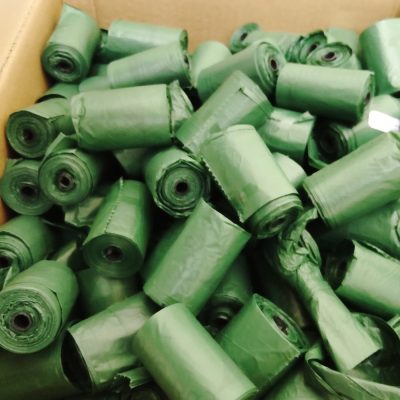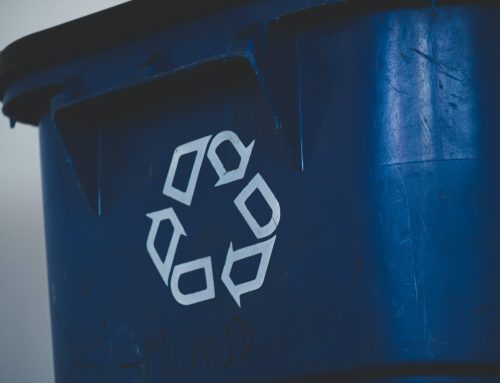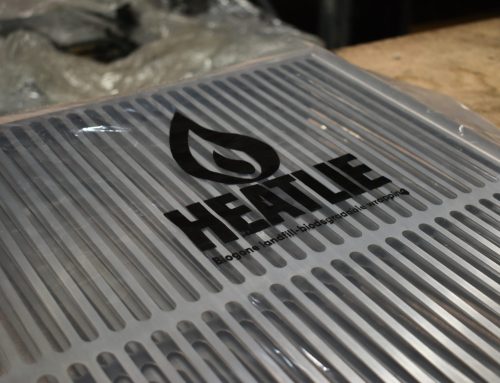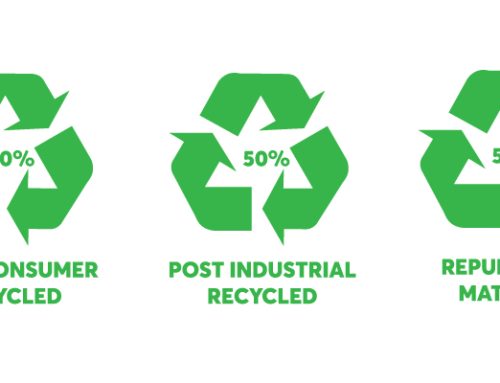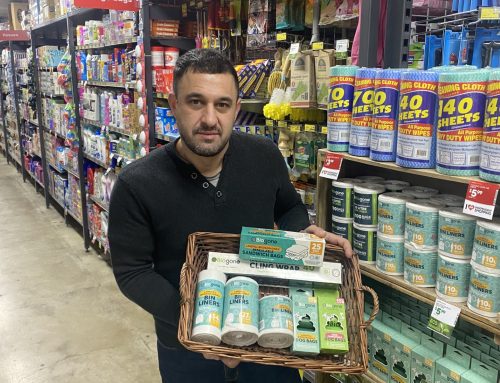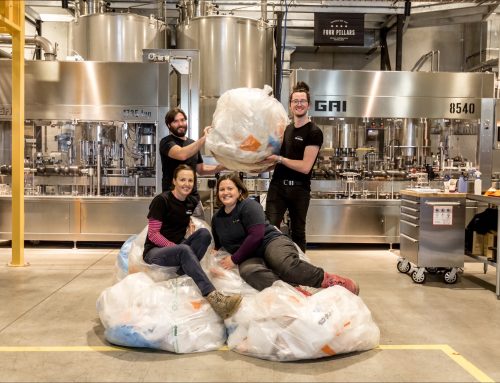Switching to plastic alternatives in your business is not only a great first step in building a better brand image but adds to creating a more eco-friendly environment. However, with so many alternatives out there – biodegradable, compostable, to recyclable products – it can get quite difficult to choose between them all and what types of packaging alternatives would fit best for your business. In this guide, we go through the main differences between biodegradable vs compostable vs recyclable plastics and what you should look for when purchasing these types of plastic alternative products.
What Are Biodegradable Plastics?
Biodegradable plastics undergo digestion by microbes to form natural bi-products and what is known as humus (a sludge that makes an excellent plant fertiliser). It also produces gas which is officially known as biogas. Biogone’s landfill-biodegradable plastics have proprietary additives that help them biodegrade naturally in landfills. Once the biodegradable packaging ends up in a landfill, it attracts the necessary microbes that break down the plastic into its natural components.
Fuels Generated During The Biodegradation Process Of Landfill-Biodegradable Plastics
In the deepest areas of a landfill, there is little oxygen available, so the microbes that are there live on hydrogen instead of oxygen. The biogas they give off there is methane CH4 (otherwise known as a ‘natural gas’ in layman’s terms). This is a good fuel and if harnessed and can be used to generate electricity or drive gas-powered vehicles etc. If the biodegradation occurs near the top of the landfill or in a managed compost pile where there is plenty of oxygen, then the biogas is CO2 – i.e. carbon dioxide.
Both CH4 and CO2 are vented to the atmosphere unless the landfill operator actively collects the CH4 to be sold. Most modern landfills capture CH4 these days as it is worth money. CO2 emissions are not worth anything and are just vented. Unfortunately, if CH4 is vented to the atmosphere it is a much worse greenhouse gas than CO2 – about 20 times worse. However, it has a short life of about 7 years in the atmosphere until it gets broken down to CO2. Hence why it’s so important to capture CO2.
How To Know If a Product Is Biodegradable
For a biodegradable claim to be accurately made on a product, it should state where it has to be disposed of in order to biodegrade. This is why at Biogone, the products we offer are always labeled as Landfill-biodegradable.
What are Compostable Plastics?
Compostable plastics simply undergo biodegradation but under controlled specific conditions. So essentially, the term compostable is a subset of the general term biodegradable. Compostable plastic is made from plants, not from oil. A commercial compost facility requires the material to be tiled (turned over) or have fresh air pumped through the piles to keep oxygen-rich.
Commercial Composting Requirements
In a commercial composting facility, the microbes in a compost facility require oxygen. If they don’t get that they die, and no more biodegradation occurs. Also, these microbes require a minimum temperature of 60 degrees celsius and lots of moisture. If they don’t get those too, they will not survive, and biodegradation stops. So, as you can see, compostable materials require a specific process and environment to actually break down, which is why there are very few commercial compost facilities around.
Why Most Compostable Packaging Products End Up In Bins and Landfills
There is no special transport to pick up compostable plastic and truck it to such a facility. Also, we as consumers can’t be expected to drive hundreds of kilometers to drop off their compostable packaging. Even with branding and labels, there aren’t many special markings on this compostable plastic to tell the consumer whether it is compostable plastic or not. Hence almost all consumers end up throwing it in the bin which ends up in a landfill where it won’t biodegrade. Even if it was marked as which consumers would more than likely throw it in the nearest bin anyway.
How long does it take for compostable plastics to biodegrade?
There is a compostable standard that dictates that compostable plastic has to be able to biodegrade within 12 months. With commercial compost, the biogas is CO2 so there is no chance to generate energy from it like it can from methane, which is a lost opportunity.
Home Compostable Packaging
Alongside commercial compostables, here are home compostable packing products that fulfil the Home Compostable standard AS5810. This means these products are also made from plants but don’t need those above specific commercial conditions for it to biodegrade. It will biodegrade in a landfill or a home compost bin. It may take 1-3 years which is still quite fast, but it does not fit the commercial compost standard. The downside of this material is it has a shelf life of about 12 months, after which it becomes weak and starts to tear easily etc. Also, neither ‘Compostable’ nor ‘Home Compostable’ technologies are able to be mainstream recycled.
What are Recyclable Plastics?
The term ‘recyclable’ refers to where the used items are sent to a facility where they are processed into a raw media form that a manufacturer can then use to make more products.
Taking the example of plastic bottles, if recycled, they are sent to a regrind facility that grinds them up to chips or powder. Then a bottling maker company may buy those to make more bottles.
Why Most Plastics Can’t be Recycled
However, plastic is not like metal. Aluminium can be recycled to make more aluminum cans a million times. The technical reason for this is metal is formed by atoms of the metal bonding together. So, when you melt a metal then cool it again the metal atoms just bond to their adjacent atoms again quite happily.
A plastic on the other hand is made of molecules that bond together in long chains of atoms. Generally, chains of Carbon with hydrogen atoms along the sides. When a plastic is remelted some of this structure gets irrevocably damaged and the plastic molecule loses some of its strength (and other) properties. This can only be done 2-3 times before the molecules are so badly damaged that the new plastic product does not have the desired properties anymore.
So, recycling of plastic sounds good but the reality is it is only delaying the inevitable to be thrown out. The plastics industry is spending a fortune on marketing recycling, recycling to make people think if they are buying plastic items or packaging that it can be recycled, and all is good. But the industry well knows it does not work and they will keep selling virgin plastic media all the time.
Choose Landfill Biodegradable Packaging at Biogone
The underlying issue with most disposable plastic alternatives is that consumers are most likely to throw out things into the bin regardless of what type of packaging it is. This is why at Biogone we’ve created landfill-biodegradable plastics and packaging materials for businesses to provide for their customers, so that people are still able to enjoy the convenience of disposable packaging, but leave less of an environmental footprint on the Earth than regular plastics.

